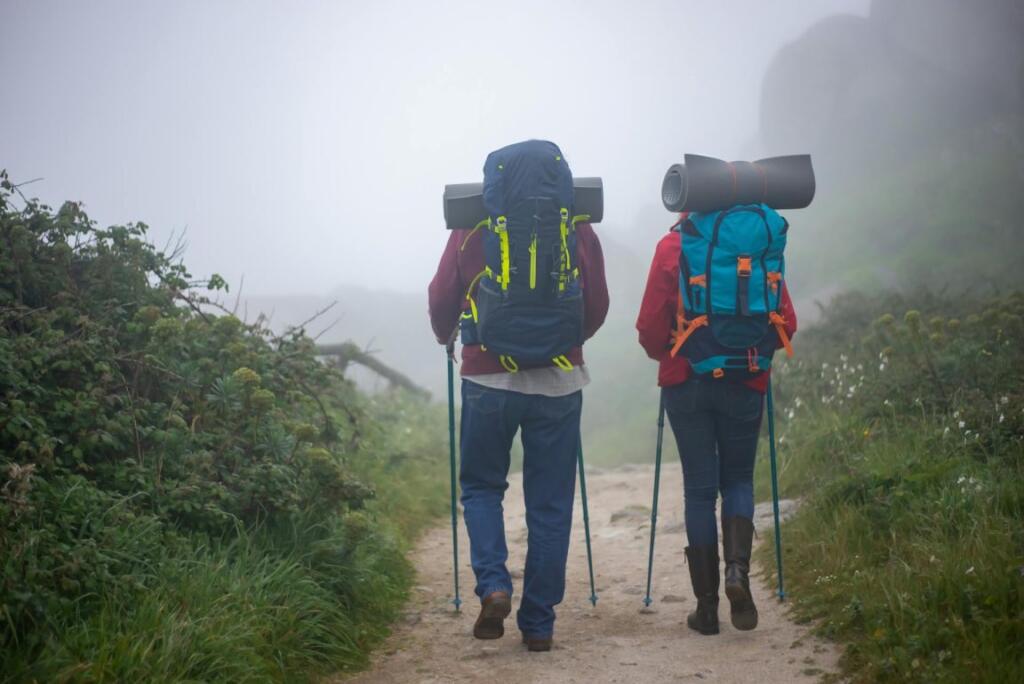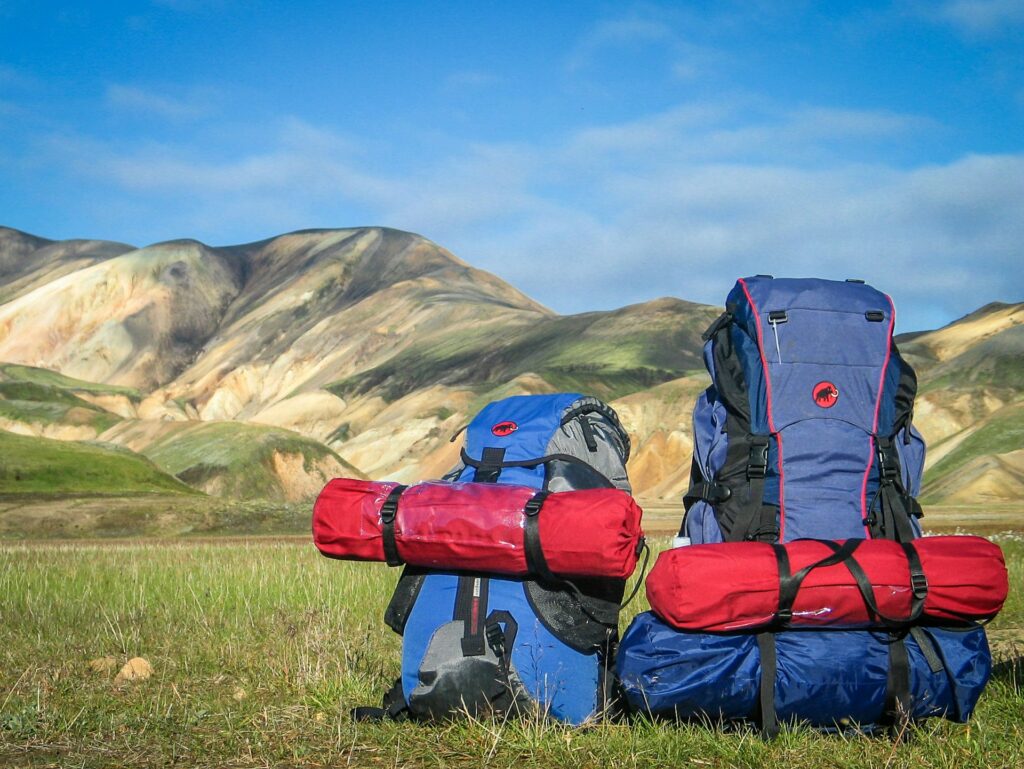How to Train for High Altitude Hiking: Esstential Tips for Success
High altitude hiking is an exhilarating and challenging adventure that offers breathtaking views and a unique sense of accomplishment. However, it also presents specific physical and mental challenges due to the reduced oxygen levels at higher elevations. Proper training is essential to ensure a safe and enjoyable experience.
In this article, we’ll discuss about how to train for high altitude hiking. So let’s get it!
Setting Realistic Goals
Assessing Your Current Fitness Level
Before embarking on your training journey, it’s crucial to evaluate your current fitness level. Understanding where you stand will help you set realistic goals and track your progress effectively. Consider consulting with a fitness professional to get a comprehensive assessment.
Setting Achievable Milestones
Break down your ultimate goal into smaller, achievable milestones. Whether it’s increasing your hiking distance or improving your cardiovascular endurance, setting these targets will keep you motivated and focused. Use the SMART criteria (Specific, Measurable, Achievable, Relevant, Time-bound) to set your goals.
Cardiovascular Conditioning

Importance of Cardio Training
Cardiovascular conditioning is the foundation of any high altitude hiking training plan. Strong cardio fitness helps your body utilize oxygen more efficiently, which is vital in a high altitude environment where oxygen levels are lower.
Effective Cardio Workouts
Running
Running is an excellent way to build cardiovascular endurance. Aim for a mix of long, steady runs and shorter, high-intensity interval training (HIIT) sessions. Incorporate hill sprints to mimic the conditions of high altitude hiking.
Cycling
Cycling, whether on a stationary bike or outdoors, is a low-impact exercise that can significantly boost your cardio fitness. Incorporate hill climbs and interval training to increase the intensity.
Swimming
Swimming offers a full-body workout that improves lung capacity and cardiovascular health. Regular swimming sessions can be a great addition to your training regimen, providing a break from high-impact activities.
Strength Training

Building Core Strength
A strong core is essential for maintaining balance and stability on uneven terrain. Incorporate exercises like planks, Russian twists, and mountain climbers into your routine. A strong core also supports your back when carrying a heavy backpack.
Leg and Lower Body Exercises
Squats
Squats are a fundamental exercise for building leg strength. They target the quadriceps, hamstrings, and glutes, all crucial muscle groups for hiking. Try different variations such as goblet squats, jump squats, and Bulgarian split squats to keep your routine interesting.
Lunges
Lunges help improve balance and coordination while strengthening your legs. Try forward, backward, and lateral lunges for a comprehensive workout. Adding weights can increase the difficulty and effectiveness of this exercise.
Upper Body Conditioning
Don’t neglect your upper body. Strengthen your shoulders, arms, and back with exercises like push-ups, pull-ups, and rows. This will help you manage your backpack and use trekking poles effectively. Incorporate resistance bands and dumbbells to vary your workouts.
Endurance Building
Long Hikes and Treks
Incorporate long hikes and treks into your training to build endurance. Start with shorter distances and gradually increase the length and difficulty of your hikes. Aim for at least one long hike per week.
Increasing Distance Gradually
Avoid the temptation to push too hard too soon. Gradually increasing your hiking distance allows your body to adapt and reduces the risk of injury. Follow the 10% rule: do not increase your weekly mileage by more than 10%.
Incorporating Weighted Backpacks
Train with a weighted backpack to simulate the conditions of your high altitude hike. Start with a lighter load and gradually increase the weight as your strength and endurance improve. This prepares your body for the added strain of carrying gear on long hikes.
Flexibility and Balance

Importance of Flexibility
Maintaining flexibility reduces the risk of injuries and enhances your overall performance. Regular stretching should be a part of your training routine. Flexibility is especially important for navigating uneven terrain and steep inclines.
Stretching Routines
Incorporate dynamic stretches before workouts and static stretches afterward. Focus on your legs, hips, and lower back. Yoga can also be a great way to improve flexibility and reduce stress.
Balance Exercises
Balance exercises like single-leg stands, heel-to-toe walks, and stability ball exercises will help you navigate uneven terrain with confidence. Include balance drills in your routine to improve your stability and coordination.
Altitude Acclimatization
Understanding Altitude Sickness
Altitude sickness, also known as acute mountain sickness, can affect anyone, regardless of fitness level. Symptoms include headaches, nausea, dizziness, and shortness of breath. Proper acclimatization is crucial to avoid these issues.
Tips for Acclimatization
Gradual Ascent
Gradually ascend to higher altitudes to give your body time to adjust. Spend a few days at intermediate elevations before tackling higher peaks. Avoid rapid ascents which increase the risk of altitude sickness.
Hydration
Staying hydrated is essential at high altitudes. Drink plenty of water and avoid alcohol and caffeine, which can contribute to dehydration. Hydrate before you feel thirsty and include electrolytes to maintain balance.
Rest Days
Incorporate rest days into your itinerary to allow your body to recover and acclimate. Listen to your body and don’t push through severe symptoms of altitude sickness. Use these days for light activity and relaxation.
Nutrition and Hydration

Importance of Proper Nutrition
Fueling your body with the right nutrients is vital for sustained energy levels. Focus on a balanced diet rich in carbohydrates, proteins, and healthy fats. Proper nutrition supports recovery and performance.
Hydration Strategies
In addition to water, consider electrolyte-rich drinks to maintain proper hydration levels. Monitor your fluid intake and adjust based on the intensity of your activities. Avoid sugary drinks and prioritize water and natural juices.
Foods to Boost Performance
Incorporate foods like nuts, seeds, lean meats, and whole grains into your diet. These provide sustained energy and essential nutrients for your hikes. Carry high-energy snacks like trail mix, energy bars, and dried fruits.
Mental Preparation
Building Mental Toughness
Mental resilience is just as important as physical strength. Practice mindfulness, meditation, and positive visualization techniques to build mental toughness. A strong mind helps you push through physical fatigue and challenging conditions.
Visualization Techniques
Visualize yourself successfully completing your hike. This mental rehearsal can boost your confidence and prepare you for the challenges ahead. Picture yourself overcoming obstacles and enjoying the journey.
Coping with Challenges
Learn to cope with the inevitable challenges and setbacks. Develop strategies for dealing with fatigue, adverse weather, and unexpected obstacles. Stay positive and adaptable to maintain morale.
Gear and Equipment

Essential Hiking Gear
Invest in high-quality gear tailored for high altitude hiking. Key items include a sturdy backpack, layered clothing, and a reliable tent. Good gear enhances comfort and safety on the trail.
Choosing the Right Footwear
Select hiking boots that offer good ankle support and have been properly broken in. Your footwear can make or break your hiking experience. Look for boots that are waterproof, breathable, and fit well.
Backpack Essentials
Pack wisely, including items like a first aid kit, navigation tools, extra clothing, and high-energy snacks. Be prepared for any situation. Ensure your pack is balanced and comfortable to carry.
Training Plan
Sample 12-Week Training Plan
Create a detailed training plan that includes cardio, strength training, endurance hikes, and rest days. Here’s a sample outline:
- Weeks 1-4: Focus on building cardiovascular fitness and basic strength training.
- Weeks 5-8: Increase the intensity of your workouts and start incorporating longer hikes.
- Weeks 9-12: Focus on endurance and altitude acclimatization, with longer hikes and weighted backpacks.
Adapting the Plan to Your Needs
Adjust the plan based on your progress and any specific challenges you face. Flexibility is key to successful training. Tailor your workouts to address weaknesses and build on strengths.
Monitoring Progress

Keeping a Training Journal
Track your workouts, hikes, and any physical or mental changes in a training journal. This will help you stay motivated and make necessary adjustments. Reflect on your progress and adjust goals as needed.
Tracking Improvements
Regularly assess your progress by setting benchmarks and evaluating your performance. Celebrate small victories to stay motivated. Use tools like fitness apps and wearable devices to monitor your stats.
Rest and Recovery
Importance of Rest Days
Rest days are crucial for recovery and injury prevention. Listen to your body and take time off when needed. Overtraining can lead to burnout and injuries.
Effective Recovery Techniques
Incorporate techniques like foam rolling, stretching, and adequate sleep into your recovery routine. Proper recovery ensures sustained progress. Consider massages and hot baths for muscle relaxation.
Safety Considerations

Staying Safe on the Trail
Safety should always be a priority. Stay informed about trail conditions, weather forecasts, and any potential hazards. Always let someone know your plans and expected return time.
Emergency Preparedness
Carry a basic first aid kit and know how to use it. Familiarize yourself with emergency procedures and have a plan in place. Know the locations of the nearest help and emergency contacts.
Benefits of Elevation Training
Training at high elevations has unique benefits, including improved oxygen utilization and increased red blood cell production. These adaptations can enhance your overall endurance and performance, making you more efficient at lower elevations.
How to Train for High Altitude Hiking: Conclusion
Training for high altitude hiking requires dedication, consistency, and a well-rounded approach. By focusing on cardiovascular fitness, strength training, endurance, flexibility, and mental preparation, you’ll be well-equipped to tackle the challenges of high altitude hiking. Remember to listen to your body, stay hydrated, and prioritize safety. Happy hiking!
Frequently Asked Questions
For more information on traveling and destination recommendations, check out my other articles on WanderingNotLost.org
Wanderingnotlost.org is a participant in the Amazon Services LLC Associates Program, an affiliate advertising program designed to provide a means for website owners to earn advertising fees by advertising and linking to amazon(.com, .co.uk, .ca etc) and any other website that may be affiliated with Amazon Service LLC Associates Program.As an Amazon Associate, I earn from qualifying purchases




